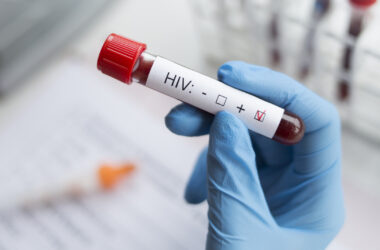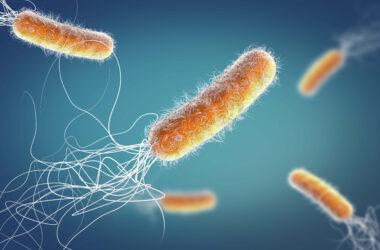Cyanobacterial toxins are amongst the most hazardous substances for humans. Their presence in drinking water due to cyanobacterial growth can result in undesirable health effects such as hay fever-like symptoms, skin rashes, respiratory and gastrointestinal distress, and even liver and kidney damage upon exposure. Therefore, there is an urgent need to better understand cyanobacterial proliferation.
Since light is a key factor driving cyanobacterial growth, the dynamics of cyanobacteria in darkness are less extensively investigated, as shown by past research lacking evidence of potential cyanobacterial growth during sludge storage in the dark.
Recently, Jesse Shapiro, an associate professor in the Department of Microbiology and Immunology at McGill, and his team filled this research gap in a paper published in Toxins. They conducted a comprehensive investigation on natural cyanobacterial growth and compositions during sludge storage under controlled conditions.
Cyanobacteria, more commonly known as blue-green algae, are microscopic organisms that are found in all forms of water, such as fresh water and seawater. They use sunlight to make their own food in a process called photosynthesis.
In favorable environments, particularly warm and nutrient-rich environments, cyanobacteria can overgrow, forming blooms that spread across a body of water. Cyanobacteria blooms produce toxins called cyanotoxins, which are extremely poisonous to humans upon exposure via ingestion, inhalation, skin contact, or eye contact. The common types of cyanotoxins include microcystins, anatoxin-a, and saxitoxins.
Conventional treatment methods have been widely applied to ensure adequate drinking water quality using drinking water treatment plants (DWTPs)—facilities that employ different water treatment processes to remove hazardous substances, such as cyanotoxins, in the water.
Although these water treatment processes can remove 60 to 99 per cent of cyanobacteria from water, they can cause an accumulation of cyanotoxins in the sludge—the waste products generated from water treatment processes, potentially leading to health issues.
“A growing number of drinking water treatment facilities are now considered at risk and must install costly treatment barriers to remove cyanobacteria and their toxins,” wrote Hana Trigui, the second author of the paper and a research associate in the Department of Civil, Geological, and Mining Engineering at Polytechnique Montréal, in an email to The Tribune. Safety issues with drinking water due to the presence of cyanotoxins also pointed to the need to better understand cyanobacterial growth during sludge storage.
In their new study, Shapiro, Trigui, and the rest of the team examined cyanobacterial diversity and dynamics in the sludge stored in a DWTP in the dark.
Although cyanobacteria rely on light for growth, they have to adapt to darkness when needed, such as after sunset.
“Cyanobacteria frequently encounter transitions between light and dark in their environment,” Trigui wrote. There are generally decreased cyanobacterial cell activities in the dark, suggesting a reduced cyanotoxin release.
However, cyanotoxin release is not as insignificant as the researchers have expected.
“Cyanobacterial cell growth in the stored sludge leads to cyanotoxin release up to four times higher than the expected concentration,” Trigui wrote.
Despite a high concentration of cyanotoxin being released, the number of cyanobacteria was largely reduced in the dark.
“Not all cyanobacterial species are able to survive in the dark during sludge storage,” Trigui wrote. “Storage [in the dark] causes significant changes in microbial diversity, leading to the selective persistence of some cyanobacterial species over other communities.”
Shotgun metagenomic sequencing was used to identify cyanobacterial cells that persistently grew during sludge storage.
“This method involves taking a sample from the sludge from a drinking water treatment plant and extracting the DNA from all bacterial species in the sample. Then, we take the short pieces of DNA and match them with a database of known genomes of different bacteria,” Shapiro said in an interview with The Tribune. “We can then say what bacterial species are likely present in the sludge where the sample is taken from.”
During sludge storage, the researchers observed persistent growth of cyanobacteria from the genera Microcystis, Aphanocapsa, Chroococcus, and Dolichospermum, all of which are capable of producing cyanotoxins.
Overall, the findings provided consistent and comprehensive evidence of cyanobacterial growth and dynamics in the stored sludge. “Treatment plant operators, therefore, need a set of better practices to reduce toxin production, prevent the breakthrough of toxins into drinking water, and manage toxic sludge,” Trigui wrote. “To this end, our research aimed to determine best practices to prevent the accumulation of toxigenic cyanobacteria and the release of toxins in full-scale treatment plants.”









Cyanobacterial growth and its impact on drinking water quality is a topic of increasing concern. This article sheds light on the critical issue of cyanobacteria-induced water contamination and the potential health risks associated with it. In addressing this problem, it is essential to have reliable tools and technologies at our disposal. Peristaltic pumps, for instance, play a vital role in water treatment and monitoring processes. Their ability to precisely control fluid transfer is invaluable when dealing with potentially contaminated water sources. Using peristaltic pumps to collect and transport water samples ensures that the integrity of the samples remains intact, allowing for accurate analysis of cyanobacterial toxins and other contaminants.
Moreover, public awareness and proactive measures are essential in preventing cyanobacterial blooms and safeguarding our drinking water. It is encouraging to see articles like this one raising awareness about the issue and emphasizing the importance of monitoring and treatment methods.